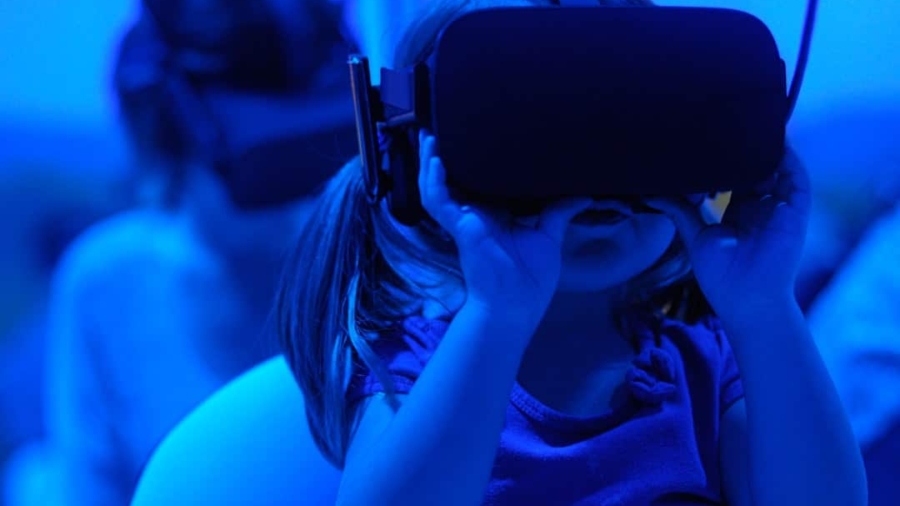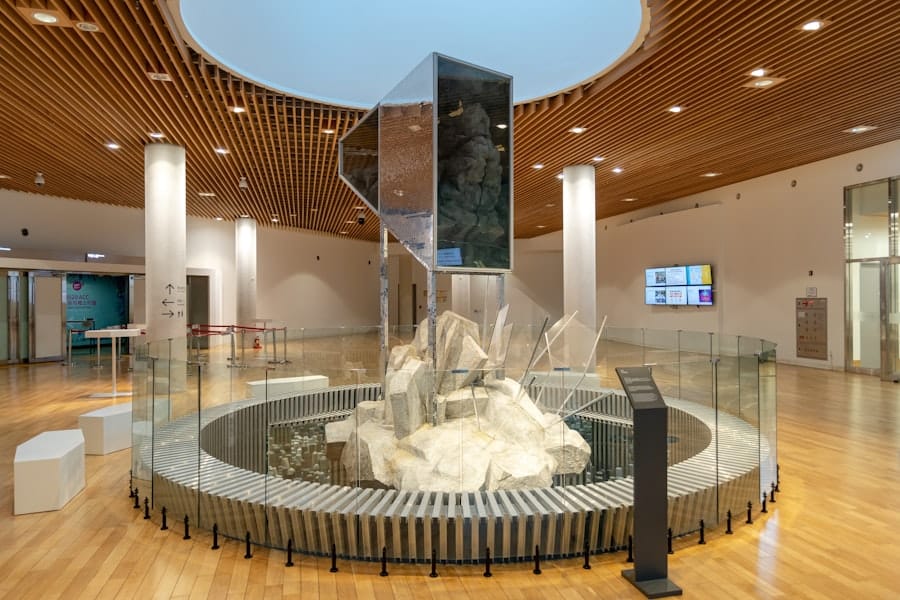The concept of memorialization has evolved significantly with the advent of digital technology, particularly within the immersive environments of the metaverse. Digital memorials are virtual spaces designed to honor and remember individuals, events, or cultural heritage, allowing users to engage with history in a way that transcends traditional physical memorials. These virtual spaces can take many forms, from interactive monuments and virtual reality experiences to online galleries and social media tributes.
The metaverse, characterized by its interconnected virtual worlds, provides a unique platform for these memorials, enabling a global audience to participate in remembrance and reflection. As society increasingly embraces digital interactions, the emergence of digital memorials reflects a shift in how we commemorate loss and celebrate legacy. Unlike traditional memorials that may be confined to specific locations, digital memorials can be accessed from anywhere in the world, breaking down geographical barriers.
This accessibility allows for a more inclusive approach to remembrance, where individuals from diverse backgrounds can share their stories and experiences. Furthermore, the interactive nature of the metaverse encourages users to engage with these memorials actively, fostering a sense of community and shared remembrance that can be profoundly impactful.
Key Takeaways
- Digital memorials are emerging in the metaverse as a new way to preserve history and honor individuals and events.
- Technology plays a crucial role in preserving history in the metaverse through digital memorials, allowing for immersive and interactive experiences.
- Digital memorials have a significant impact on education and awareness by making historical events and figures more accessible and engaging.
- Challenges and controversies surround digital memorials in the metaverse, including issues of authenticity, privacy, and ethical considerations.
- The future of digital memorials in the metaverse holds potential for growth, with opportunities for individuals to contribute to and create meaningful experiences.
How Digital Memorials are Preserving Historical Events and Figures
Recreating Historical Moments
By utilizing advanced technologies such as virtual reality (VR) and augmented reality (AR), these memorials can recreate significant events in time, allowing users to witness history firsthand. For instance, a digital memorial dedicated to a pivotal event like the Civil Rights Movement might include interactive timelines, virtual reenactments, and personal narratives from those who lived through it.
Humanizing Historical Events
This approach not only educates users about historical events but also humanizes them, making the past more relatable and engaging. Moreover, digital memorials can preserve the legacies of influential figures in ways that traditional monuments cannot. For example, a virtual tribute to a historical leader could include multimedia presentations featuring speeches, writings, and personal anecdotes from contemporaries.
Fostering a Nuanced Appreciation of History
This multifaceted representation allows for a deeper understanding of the individual’s impact on society and encourages critical thinking about their contributions and controversies. By curating these narratives within the metaverse, digital memorials ensure that the complexities of history are acknowledged and explored, fostering a more nuanced appreciation of our collective past.
The Role of Technology in Preserving History in the Metaverse
Technology plays a crucial role in the preservation of history within the metaverse, enabling innovative methods for documenting and sharing cultural heritage. Advanced tools such as 3D modeling, photogrammetry, and blockchain technology are being employed to create accurate representations of historical sites and artifacts. For instance, organizations like CyArk have been digitizing endangered cultural heritage sites around the world using 3D scanning technology.
These digital replicas can be integrated into metaverse platforms, allowing users to explore these sites virtually while ensuring their preservation for future generations. In addition to creating digital replicas, technology facilitates the collection and dissemination of historical narratives. Crowdsourcing platforms enable individuals to contribute their stories and experiences related to specific events or figures, enriching the collective memory within the metaverse.
This democratization of history allows for diverse perspectives to be included in the narrative, challenging dominant historical accounts and promoting inclusivity. Furthermore, artificial intelligence (AI) can analyze vast amounts of data to identify patterns and connections within historical events, providing users with insights that deepen their understanding of the past.
The Impact of Digital Memorials on Education and Awareness
Digital memorials have significant implications for education and awareness, transforming how history is taught and understood. Traditional educational methods often rely on textbooks and lectures, which can be limiting in their ability to engage students fully. In contrast, digital memorials offer interactive learning experiences that captivate users’ attention and encourage active participation.
For example, students can explore virtual exhibits that showcase artifacts from a specific era or engage in role-playing scenarios that simulate historical events. This experiential learning fosters critical thinking skills and enhances retention by allowing students to connect emotionally with the material. Moreover, digital memorials can raise awareness about lesser-known historical events and figures that may not receive adequate attention in mainstream education.
For instance, a digital memorial dedicated to Indigenous peoples might feature interactive storytelling elements that share their histories and cultures from their perspectives. This approach not only educates users but also promotes empathy and understanding across cultural divides, fostering a more informed and compassionate society.
Challenges and Controversies Surrounding Digital Memorials in the Metaverse
Despite their potential benefits, digital memorials in the metaverse face several challenges and controversies that warrant careful consideration. One significant concern is the issue of authenticity and representation. As digital memorials often rely on user-generated content or interpretations of historical events, there is a risk of misrepresentation or oversimplification of complex narratives.
This challenge raises questions about who gets to tell these stories and how they are framed within the virtual space. Ensuring that diverse voices are included while maintaining historical accuracy is a delicate balance that requires ongoing dialogue among stakeholders. Another challenge lies in the technological divide that exists within society.
While the metaverse offers exciting possibilities for engagement and interaction, not everyone has equal access to the necessary technology or internet connectivity. This disparity can lead to exclusionary practices where only certain groups can participate in or benefit from digital memorials. Additionally, concerns about data privacy and security arise as users engage with these platforms, particularly when sharing personal stories or experiences related to sensitive topics.
Addressing these challenges is essential for creating inclusive and respectful digital memorials that honor diverse histories while safeguarding user rights.
The Future of Digital Memorials and Their Potential for Growth
Immersive Experiences
As virtual reality becomes more accessible and affordable, we can expect an increase in immersive experiences that allow users to engage with history in unprecedented ways. Innovations such as haptic feedback technology could further enhance these experiences by providing users with tactile sensations that simulate real-world interactions within virtual environments.
Preserving Cultural Heritage
Moreover, as more individuals recognize the importance of preserving cultural heritage in a rapidly changing world, there is likely to be greater investment in digital memorial projects. Collaborations between governments, educational institutions, and cultural organizations could lead to the creation of comprehensive digital archives that document significant events and figures across various cultures.
Global Awareness and Education
These initiatives would not only serve as valuable educational resources but also promote global awareness and appreciation for diverse histories.
Examples of Successful Digital Memorials in the Metaverse
Several successful examples of digital memorials in the metaverse illustrate their potential impact on remembrance and education. One notable project is the “Holocaust Memorial” created by the United States Holocaust Memorial Museum. This immersive experience allows users to explore a virtual representation of significant sites related to the Holocaust while engaging with survivor testimonies and historical documents.
By combining education with emotional engagement, this digital memorial effectively honors the memory of those lost while fostering awareness about this dark chapter in history. Another compelling example is “The 9/11 Memorial & Museum,” which has expanded its reach through digital platforms. The museum offers virtual tours that allow users to explore exhibits related to the September 11 attacks while providing access to personal stories from survivors and first responders.
This initiative not only preserves the memory of those affected by the tragedy but also serves as a powerful educational tool for future generations who may not have lived through those events.
How Individuals Can Contribute to Digital Memorials in the Metaverse
Individuals play a crucial role in shaping digital memorials within the metaverse by contributing their stories, experiences, and creative expressions. Many platforms encourage users to share personal narratives related to specific events or figures, allowing for a more diverse representation of history. By participating in these initiatives, individuals can help ensure that marginalized voices are heard and included in the collective memory.
Additionally, individuals can engage with existing digital memorials by providing feedback or suggesting improvements based on their experiences. This collaborative approach fosters a sense of community ownership over these virtual spaces while promoting ongoing dialogue about how best to honor history within the metaverse. Furthermore, those with technical skills can contribute by creating new digital memorial projects or collaborating with organizations dedicated to preserving cultural heritage through innovative technologies.
In conclusion, as we navigate this evolving landscape of remembrance within the metaverse, it is essential for individuals to recognize their agency in shaping how history is preserved and honored digitally. Through active participation and collaboration, we can create meaningful spaces that reflect our shared humanity while ensuring that future generations have access to rich narratives that inform their understanding of the past.
Digital memorials are just one example of how technology is changing the way we remember and honor the past. Another fascinating use of technology is in the realm of house planning and design. Enicomp recently published an article highlighting the best software for house plans, showcasing how digital tools are revolutionizing the way we conceptualize and create living spaces. This article serves as a reminder that technology is not only preserving history but also shaping the future of architecture and design. Check out the article here to learn more about this exciting intersection of technology and creativity.
FAQs
What are digital memorials in the metaverse?
Digital memorials in the metaverse are virtual spaces created to honor and remember historical events, individuals, or communities. These memorials can take the form of 3D environments, interactive exhibits, or virtual museums, and are accessible to users through virtual reality or other digital platforms.
How are digital memorials preserving history?
Digital memorials are preserving history by providing a new way to document and share historical events and experiences. By creating immersive and interactive experiences, digital memorials can engage a wider audience and ensure that important stories and legacies are preserved for future generations.
What are some examples of digital memorials in the metaverse?
Examples of digital memorials in the metaverse include virtual exhibits dedicated to historical figures, interactive experiences that recreate significant moments in history, and virtual spaces designed to commemorate specific events or tragedies. These memorials can cover a wide range of topics, from war memorials to cultural heritage sites.
How can people access digital memorials in the metaverse?
Digital memorials in the metaverse can be accessed through various virtual reality platforms, online gaming environments, and other digital spaces. Users may need specific software or hardware, such as VR headsets, to fully experience these memorials, while others may be accessible through standard web browsers or mobile devices.
What are the benefits of creating digital memorials in the metaverse?
Creating digital memorials in the metaverse offers several benefits, including the ability to reach a global audience, provide immersive and interactive experiences, and preserve historical narratives in innovative ways. These memorials can also serve as educational tools and platforms for collective remembrance and reflection.



